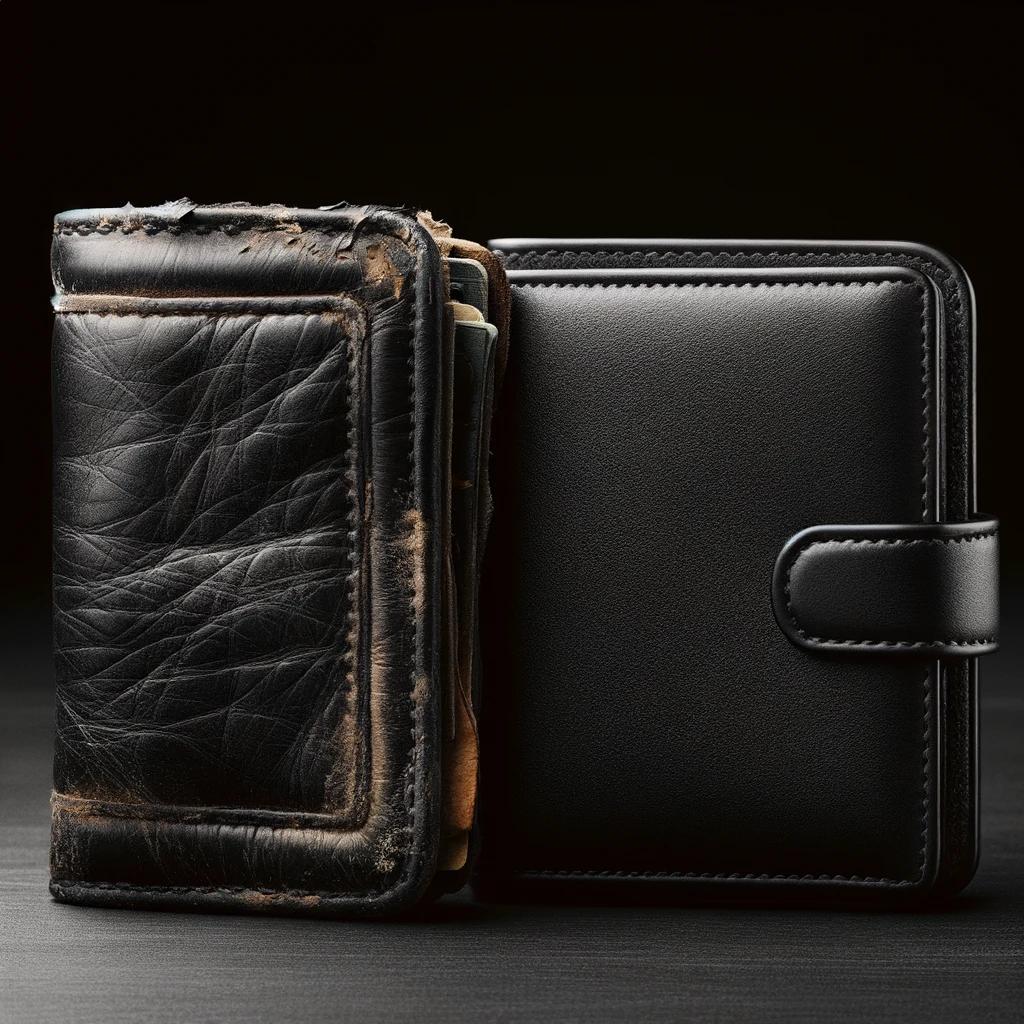Importance of Keeping Leather Wallets Clean
Leather wallets are not just a practical accessory; they are a statement of style and sophistication. Keeping your leather wallet clean is essential not only to preserve its aesthetic but also to maintain its durability and functionality. Dirt, oils, and everyday grime can degrade leather over time, leading to a worn-out appearance and eventual breakdown of the material. Regular cleaning prevents build-up and keeps the leather supple, ensuring your wallet looks sharp for years.
Specific Considerations for AMEX Express Card Holders
AMEX Express card holders, characterized by their distinctive cards, face additional considerations when it comes to leather wallet care. Premium cards can carry with them unique requirements for care to maintain their appearance and avoid damage. A well-maintained wallet ensures that the magnetic strips and chips on these cards remain intact and functional. It’s a small but important aspect of maintaining the luxury and prestige associated with being an American Express cardholder.
Understanding Leather Material
Different Types of Leather Used in Wallets
Leather used in wallet construction can range from full-grain and top-grain to genuine and bonded leather, each offering different characteristics and levels of durability. Full-grain leather is the highest quality, with a natural surface that includes all the original markings of the animal’s skin. Top-grain leather is similar, but it has been sanded to remove imperfections. Genuine leather, while real, is not as high-quality as the first two types, and bonded leather is made from scraps molded together. Knowing which type you have is crucial for proper maintenance.
How Leather Ages Over Time
Leather is unique in that it develops a patina over time, which many regard as a desirable characteristic that adds to the wallet’s distinctive appearance. This patina is a sheen that develops through regular use and exposure to elements like oils from the skin and sunlight. However, unwanted aging can also occur, such as cracking or drying out, if the leather is not properly cared for. Understanding how leather ages allows you to take preemptive steps in maintenance to guide the aging process positively.
Initial Steps for Leather Wallet Maintenance
Regular Inspection
Maintenance of your leather wallet begins with regular inspections. Carefully examining your wallet can help catch any early signs of wear and tear or damage before they escalate. Look for loose stitching, creases where the leather might be weakening, and any discoloration or spots. Addressing these issues promptly ensures that minor concerns don’t turn into major problems.
Emptying Your Wallet
Before you embark on any cleaning or maintenance regimen, start by emptying your wallet completely. This means taking out cash, cards, receipts, and any other items stashed in various compartments. It’s a necessary step not just for thorough cleaning, but also to check for any internal damage that might not be visible when the wallet is full. This also provides an opportunity to assess and discard any unnecessary items that contribute to bulging or misshaping the wallet.
Cleaning Your Leather Wallet
Dusting and Surface Cleaning
The first and simplest step in cleaning your leather wallet involves dusting and wiping down the surface. Using a soft cloth or a brush specifically designed for leather, gently remove any surface dust and debris. Microfiber cloths are particularly suitable for this as they don’t leave behind fibers and are gentle on the leather. For a more thorough clean, slightly dampen the cloth with water or a cleaner made for leather to wipe the wallet, always being sure to use minimal moisture to prevent water damage.
Deep Cleaning Techniques
When a superficial clean isn’t enough, deep cleaning is necessary to restore your wallet’s look. Use a specialized leather cleaner and follow the instructions carefully. Apply a small amount of the cleaner on a clean cloth and rub it onto the leather in circular motions – allowing the cleaner to penetrate the pores and lift dirt from deep within. It’s crucial not to over-saturate the wallet and to test the cleaner on an inconspicuous area first to avoid causing unintentional damage or discoloration.
Moisturizing Your Leather Wallet
Selecting a Leather Conditioner
Just like skin, leather needs moisturization to stay soft and flexible. After cleaning, conditioning is the next vital step. You need to select the right leather conditioner – one that is appropriate for the type of leather. Some conditioners are oil-based, others are wax-based, and some are specifically designed to preserve the leather’s natural sheen without darkening it. Read the labels and choose a conditioner that aligns with your wallet’s leather type and your aesthetic preferences.
Application Method for Conditioners
Applying the conditioner correctly is as important as selecting the right one. Using a soft cloth, gently rub the conditioner into the leather in a circular and even motion, concentrating especially on areas that are prone to bending and creasing. The key is to use a small amount and build up as necessary – leather can only absorb so much product at a time. After applying, leave the wallet to dry naturally in a well-ventilated area away from direct heat or sunlight, which can cause the leather to crack.
Removing Stains from Leather Wallets
Identifying the Type of Stain
Addressing stains on a leather wallet requires you first to identify the type of stain you’re dealing with. Different stains will require different treatment approaches. Ink stains, for example, can be treated with rubbing alcohol, while oil or grease should be blotted out and then dusted with talcum powder or cornstarch. Knowing the nature of the stain will prevent the application of incorrect cleaning techniques that can further embed the stain or damage the leather.
Home Remedies and Commercial Solutions
For minor stains, home remedies can often do the trick. A simple mixture of warm water and dish soap can gently clean most surface stains if used carefully. For tougher stains, commercial leather stain removers are formulated to tackle specific types of stains without harming the leather. Always follow the instructions on these products carefully and test them on a small, inconspicuous area first before treating the stain.
Storing Your Leather Wallet
Ideal Conditions for Leather Preservation
Storing your leather wallet correctly is crucial to its longevity. Ideal conditions are somewhere cool, dry, and away from direct sunlight, which will prevent the leather from drying out or fading. Additionally, keep the wallet in a shape that’s natural to its design; overfilling or storing it in a compressed position can cause deformations that are difficult to correct.
Tips for Long-Term Storage
If you plan to store your leather wallet for an extended period, take additional steps to ensure its condition is preserved. Wrap the wallet in a soft cloth or place it in a breathable pouch to keep away dust and moisture. If you have desiccants like silica gel packets, consider placing one in the storage area to help control humidity levels. Don’t store leather in plastic bags or containers, as these can encourage mold and mildew due to lack of air circulation.
Special Tips for American Express Cardholders
Keeping Card Slots Intact
American Express cardholders need to be particularly mindful of the wallet’s card slots. Constantly shoving cards in and out can stretch the leather and warp the shape of card slots. To keep them intact, be gentle when inserting or removing cards and avoid overstuffing slots. If slots become overly stretched, sometimes leaving the wallet empty for a period can help the leather naturally retract a bit.
Preventing Card Imprint Transfers
Another common issue for cardholders, including those with American Express cards, is the transfer of card imprints onto the leather. This often happens due to pressure and heat, such as sitting on a wallet in your back pocket. To prevent this, make sure that cards are not stacked on top of one another and consider rotating their positions periodically. Also, avoid placing the wallet in areas where it’s subject to prolonged pressure.
Repair and Professional Care for Leather Wallets
When to Seek Professional Help
Leather wallets can sometimes sustain damage that’s beyond what home-care can repair – such as deep scratches, tears or malfunctioning hardware. This is when it’s time to seek professional help. Leather experts can offer services such as leather recoloring, scratch repair, and hardware replacement. If your wallet holds sentimental value, or if it’s a high-end piece, professional care can be a worthy investment.
DIY Minor Repair Tips
For minor repairs, such as loose stitches or small scuffs, you may opt for DIY fixes. Using a matching thread, you can stitch up a loose seam, or use a leather repair kit to touch up small scratches and scuffs. Always follow product instructions carefully, and if in doubt, it’s better to leave the task to professionals to ensure the best results.
Conclusion
Summary of Key Maintenance Tips
To sum up, keeping a leather wallet in prime condition involves regular inspection and cleaning, moisturizing with the appropriate conditioner, careful storage, and prompt stain removal. For those with American Express cards, special attention to card slots and imprint transfer prevention can keep both the wallet and cards in impeccable condition.
Encouragement for Regular Care to Extend Wallet Life
Regular maintenance can significantly extend the life of your leather wallet, keeping it functional and stylish for many years. It’s a small investment of time that pays off by preserving the beauty and integrity of the leather. Whether you’re an American Express cardholder or simply someone who appreciates the quality of a good leather wallet, regular care is paramount. Keep these tips in mind, and your wallet will remain a sharp and trusty companion on your daily journeys.






